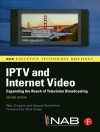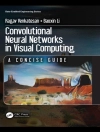This book deals with air-ground aeronautical communications. The main goal is to give the reader a survey of the currently deployed, emerging and future communications systems dedicated to digital data communications between the aircraft and the ground, namely the data link. Those communication systems show specific properties relatively to those commonly used for terrestrial communications. In this book, the system architectures are more specifically considered from the access to the application layers as radio and physical functionalities have already been addressed in detail in others books.
The first part is an introduction to aeronautical communications, their specific concepts, properties, requirements and terminology. The second part presents the currently used systems for air ground communications in continental and oceanic area. The third part enlightens the reader on the emerging and future communication systems and some leading research projects focused on this scope. Finally, before the conclusion, the fourth part gives several main challenges and research directions currently under investigation.
Daftar Isi
FOREWORD ix
INTRODUCTION xiii
CHAPTER 1. CURRENT COMMUNICATION RADIO SYSTEMS FOR DATA LINK
1
1.1. History and definition 1
1.1.1. From voice to data link 1
1.1.2. Communication traffic classes 3
1.1.3. Main actors and organizations 5
1.2. Systems architecture 8
1.2.1. ACARS 8
1.2.2. FANS 1/A 11
1.2.3. ATN baseline 1 and FANS 2/B 13
1.3. Radio subnetworks for air-ground communications
21
1.3.1. Radio resource management 21
1.3.2. VHF communications 25
1.3.3. SATCOM 34
1.3.4. HF communications 44
CHAPTER 2. EMERGING AND FUTURE COMMUNICATION RADIO SYSTEMS
FOR DATA LINK 49
2.1. Data link related research projects 49
2.1.1. Topics of interest 49
2.1.2. European project: SESAR 52
2.1.3. North American project: Next Gen 55
2.1.4. Designing emerging communication systems for data link
(for both SESAR WP and Next Gen technologies) 56
2.2. Emerging communication systems 57
2.2.1. Integrated end-to-end communication architecture 57
2.2.2. Future aeronautical communication systems 59
CHAPTER 3. CHALLENGES AND RESEARCH DIRECTIONS 79
3.1. Sharing information: the SWIM concept 79
3.1.1. Why does ATM need SWIM? 79
3.1.2. SWIM principles 81
3.1.3. SWIM technical components 81
3.2. Multilink operational concept 83
3.2.1. Multilink operational concept requirements 83
3.2.2. Vertical handover in MLOC 84
3.3. IP mobility 87
3.3.1. IP mobility requirements for the FCI 88
3.3.2. IP mobility candidate solutions 88
3.3.3. IP mobility: open issues 89
3.4. Traffic segregation 90
3.4.1. Context 90
3.4.2. Traffic segregation and priority management strategies
91
3.4.3. Certification issues for multiplexing solutions (from a
safety point of view) 93
3.5. Aeronautical network communications security 94
3.5.1. Levels of deployment for security mechanisms 95
3.5.2. Security controls coordination 98
3.6. Future aeronautical communication means: AANET
(Aeronautical Ad Hoc Network) 100
3.6.1. AANET-based air/ground communications 100
3.6.2. AANET principles and properties 101
3.6.3. AANET access layer considerations 104
3.6.4. AANET communications performances 106
CONCLUSION 109
APPENDIX 113
BIBLIOGRAPHY 121
INDEX 127
Tentang Penulis
MOHAMED SLIM BEN MAHMOUD is a researcher and an associate professor at the French Civil Aviation University (Ecole Nationale de l’Aviation Civile – ENAC), Toulouse, France. He is a full time member of the TELECOM/Res Co research team, his major research contributions are related to network security engineering with a particular focus on the Aeronautical Communication Networks (ATN). He is also involved in the Single european Sky ATM Research (SESAR) project where future data link technologies are being defined.
CHRISTOPHE GUERBER is an engineer, data link teacher and networks at ENAC. He took part during his career in the definition, validation and implementation of the data link in europe. As a member of the European and international standardization and standardization groups, he worked with French and European air navigation organizations. He also participated in the definition of avionics systems for embedded ATC data link applications.
NICOLAS LARRIEU is an associate professor at the research group Res Co at the TELECOM laboratory of ENAC (French Civil Aviation University). He is graduated from INSA of Toulouse where he got a Ph D in Computer Science in 2002.
His research topics deal with designing new communication architectures and original security architectures for emerging networks such as IP-based aeronautical communication networks or UAV communication networks. His is currently involved in several work activities of the SESAR European program where he can extend and validate his research results.
ALAIN PIROVANO is a teacher / researcher and head of the Res Co research group at ENAC (TELECOM laboratory). These lessons and his research focus mainly on communication networks, particularly in the aeronautical and satellite fields. He is involved in several research programs including SESAR (Single European Sky ATM Research).
JOSÉ RADZIK is a teacher-researcher at the DEOS (Electronics Optronics Signal) department of ISAE (Institute Superior of Aeronautics and Space). He is involved in research programs related to satellite communications. He is responsible for the option ‘Telecommunications and Satellite Networks’ of the SUPAERO Ingenieur Training.












